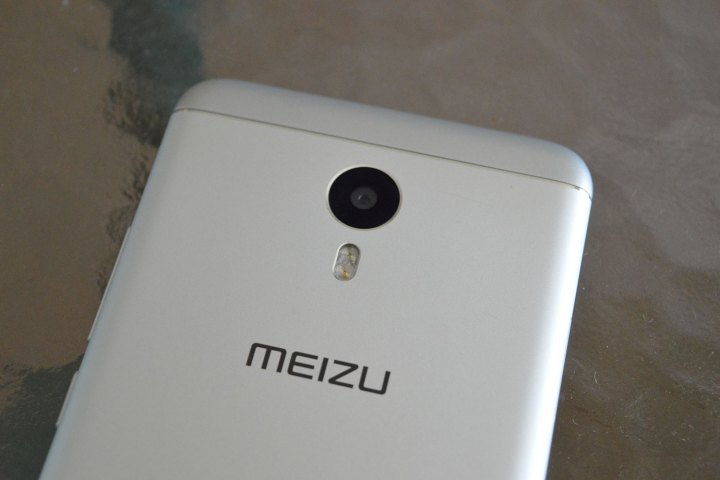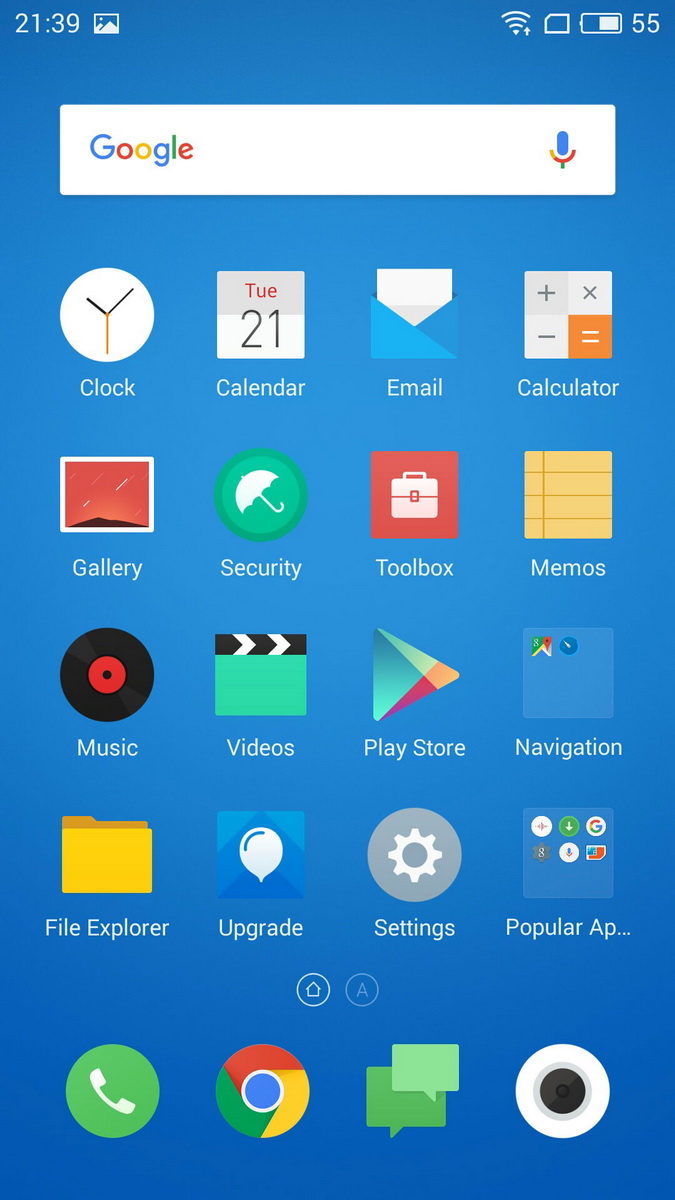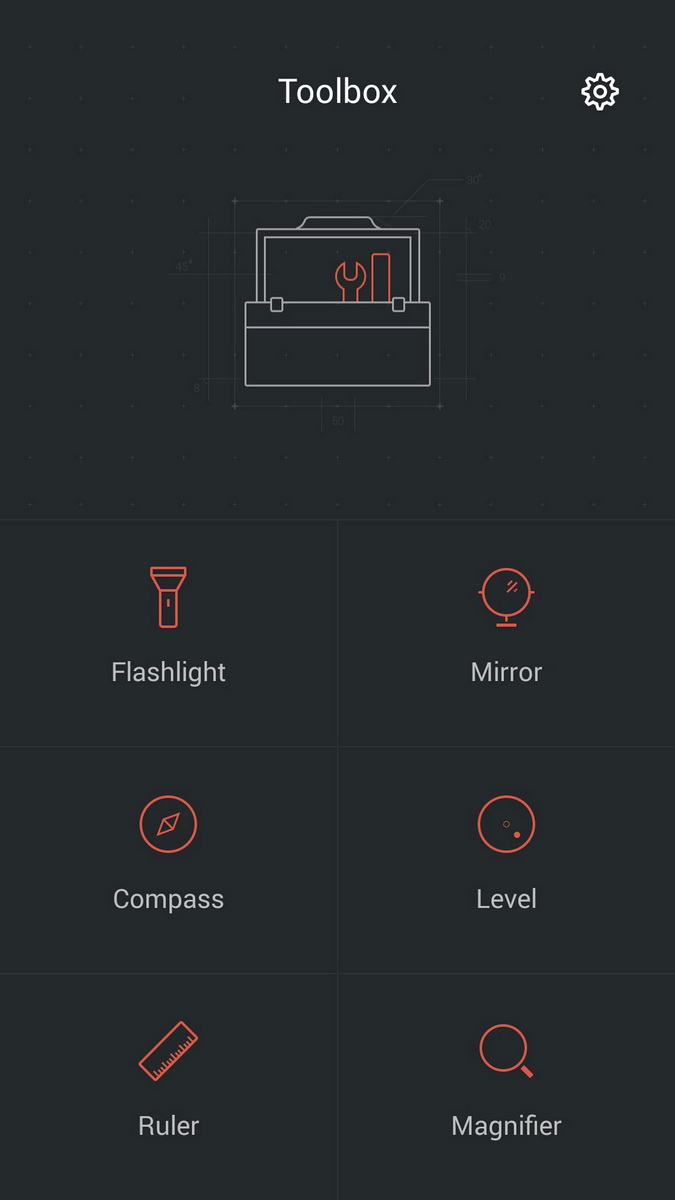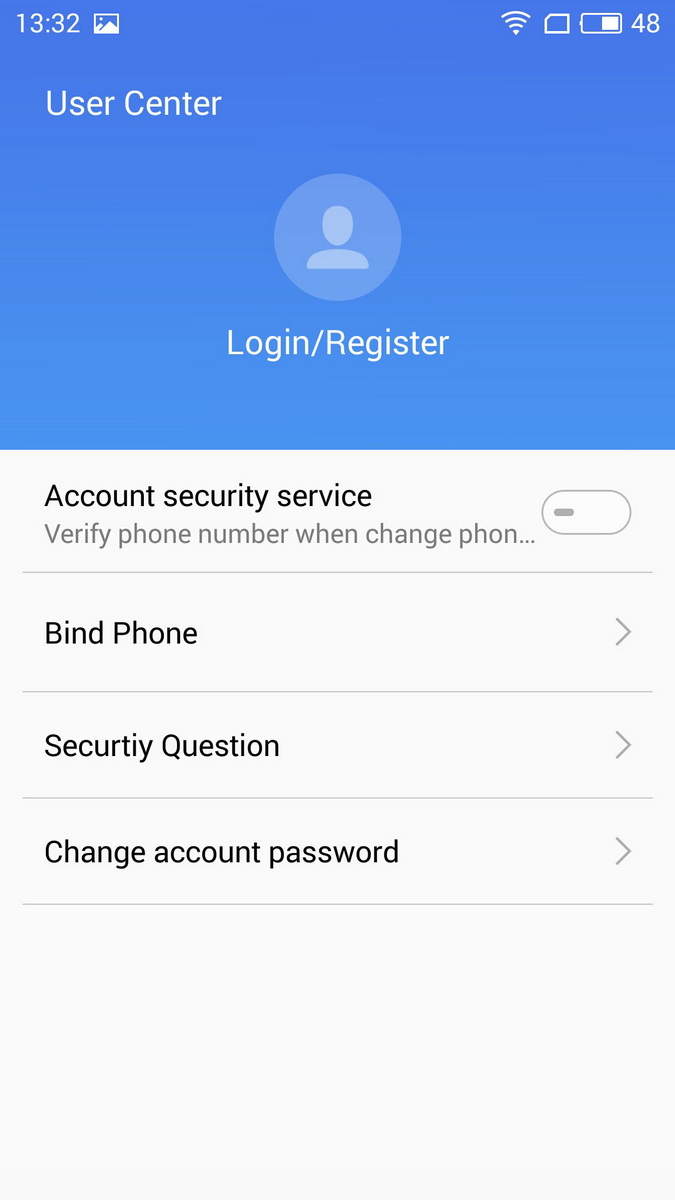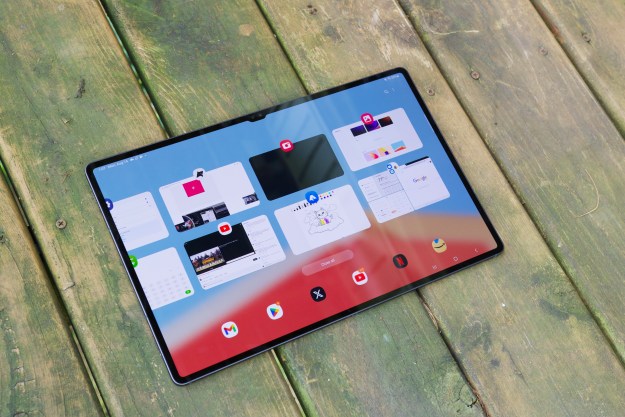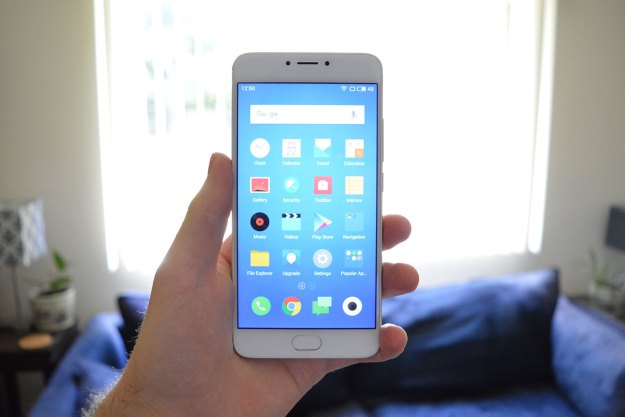
“Meizu’s M3 Note is sleek and cheap, but not as good as its competitors.”
- Beautiful Design
- Useful stock apps
- Sharp 1080p screen
- Long battery life
- Mediocre performance
- Poor camera
- Easy to scratch the plastic back
- Older version of Android
- Can’t compete with other budget phones
Chinese smartphone makers started the wave of packing strong specs into sleek phones with attractive price tags to beat out the iPhone in China. Companies like Meizu, Xiaomi, and Oppo led the charge for cheap phones, but nowadays, high-end budget phones are a dime a dozen, and you can buy a quality smartphone for less than $300 with ease.
The affordable phone market is well and truly saturated, and companies need absolutely stellar devices to compete in this cutthroat world. We decided to give the Meizu M3 Note a spin to see how it compares to other high-quality budget phones like the Huawei Honor 5X and the Lenovo G4 lineup.
Plastic back scratches too easily
We know what you Apple fan boys and girls are thinking – that phone looks an awful lot like an iPhone. You’re not wrong, but that’s not necessarily a bad thing. Sure, Meizu isn’t going to score any points for originality in design, but it’s still somewhat uncommon to come across a mid-range device that looks as great as the M3 Note.
The phone isn’t overly thin, but it has a nice-premium feel to it, despite the fact that it’s not made of metal. Although the M3 Note may look like it’s made from aluminum in some pictures, it’s actually plastic with a metallic finish. It’s reminiscent of the LG G3’s metallic-looking plastic back plate.
Unfortunately, that plastic back scratches way too easily. I scarred the back of the M3 Note on the same day it arrived in the mail. The back got scratched when I simply slid the phone gently across a table. There really wasn’t anything under the phone, although there must have been a speck of dirt or something, because it certainly made a scratch. You’re going to want to buy a case to protect it from the inevitable scratches.
Otherwise, the phone has a nice look and feel. On the front, you’ll find the display, along with a multipurpose home button that has a built-in fingerprint sensor, the speaker, front-facing camera, and ambience sensor. The phone is built so that the front-facing camera and ambience sensor look as similar as possible, and the two sensors are placed on either side of the speaker for perfect symmetry.
On the back, that’s no different. The camera is placed smack-dab in the middle of the back, and the camera’s flash lies directly under it. On the right side, you’ll find the standard power button and volume rocker, and on the left, the SIM/MicroSD card slot tray. That’s right, the M3 Note is dual-SIM, however if you use a MicroSD card, you’re going to have to sacrifice that second SIM spot.
The back is also home to the same antenna band layout as the iPhone that crosses along the back and sides of the device. On the bottom, there’s a Micro USB port with a speaker grill on one side and microphone on the other. The headphone jack sits at the top of the phone.
It’s not terribly original, but the design is still attractive. Sadly, the scratchable plastic back drags it down, especially when you compare it to the Honor 5X, which sports a more durable aluminum back plate.
Wait, is this an Android? No, it’s Flyme
Meizu continues its iPhone-inspired design with the software. The M3 Note runs Android, but much like Samsung uses TouchWiz to customize Android and HTC uses Sense, Meizu alters the look of
Just like in iOS, there isn’t an app drawer, so all your apps are laid out across your home screens. You can make app folders, like on any other Android phone, but there’s no drawer for stowing away the apps you don’t use too often. Thankfully, if you prefer the look of stock
Flyme comes with a number of great apps that could really help your day-to-day use. For example, the Security app offers a way to ‘clean’ your files, delete temporary files, close unused apps, check how much RAM is being used by your open apps, edit your app permissions, and even perform basic antivirus functions. It’s a cool app that’s well designed and easy to use, and could speed up your phone significantly if you use it enough.
Another interesting app is Toolbox, which basically offers, as the name suggests, a suite of tools. You’ll get a flashlight, mirror, compass, level, ruler, and magnifier, all easily accessible within the Toolbox app. Again, it’s well designed and everything looks great, and the app could really come in handy.
All in all, while Flyme does have a distinctly iOS look, it offers a few features that go beyond a simple iOS knock off and really bring Flyme into its own. It’s a competitive version of Android, and while it certainly makes a push for Meizu’s own services, those services can be pretty useful. Not only that, but unlike iOS you have some serious control over the look of Flyme. There’s even a Theme app that offers themes so you can find the perfect look for you.
Perhaps the worst thing about Flyme is that it there are hints here and there to remind you that this isn’t originally an English-language phone. You’ll find a few spelling mistakes. It’s nothing overly embarrassing or difficult to understand, but there really shouldn’t be spelling mistakes in an operating system, especially if you’re trying to make waves around the globe.
Gone are the days when buying a ‘budget’ phone meant dealing with a sub-par, 720p screen.
Unfortunately, the device is a little dated when it comes to versions of Android – it ships with
With bugs like Stagefright and Heartbleed becoming more common, it’s particularly important that phones receive updates in a timely manner. Having a highly customized UI on top of Android is one sure fire way to ensure that updates take a long time to process. It’s a real shame that Meizu hasn’t committed itself to getting
The all-purpose home button
The navigation on the M3 Note is going to be a little difficult for Android users to get used to, but it’s certainly an interesting idea. There are no standard
To access your open apps list, you swipe up from the very bottom of the screen. Once you do that, you’ll find a card-like list of apps, as well as a “close all” button – Flyme beat Google to the punch on that one. When you press the clear all button, you’ll be told exactly how many MB worth of RAM you just cleared, which is a nice little touch.
Also in the home button is the fingerprint sensor, and I have to say, while it doesn’t move as quickly as some of those fancy shmancy new fingerprint sensors on devices like the OnePlus 3, it surprised me how quickly it did act. For the most part, it detected my fingerprint with no issue. Sure, it misread my print perhaps once every ten attempts, but that’s common with many fingerprint sensors. Simply lifting my finger and trying again usually worked.
This phone raises the bar for budget displays
Gone are the days when buying a ‘budget’ phone meant dealing with a sub-par, 720p screen. The screen on the Meizu M3 Note is an IPS LCD with a resolution of 1080p. It’s 5.5-inches in size, and while the phone certainly isn’t bezel-less, the bezels on the side are very thin.
The display looks great. The colors are bright and pop out, it has decent viewing angles, and unless you’re looking at some super tiny fonts, you really aren’t going to feel like you need more pixels. That’s a pretty big achievement for a handset in this price range – often manufacturers skimp out on display in favor of boosting the specs a little. For this phone, it seems like Meizu has done the opposite.
Under the hood
Looks and design are great and all, but when buying a budget phone, it’s especially important to look at specs, as mid-range handsets are less likely to last as long as their more expensive counterparts, especially under heavy use.
If you’re considering the M3 Note, you should be aware that it is not a high performer. The version we tested had 16GB of storage with 2GB of RAM, however it can also be bought with 32GB and 3GB of
According to our tests, the M3 Note benchmarks 41,235 on AnTuTu, and 2,725 on GeekBench 3 (multi-core). Those are pretty uninspiring scores. Sure, there are eight cores, but when those eight cores tend to run pretty slowly, you’re still left with an underperforming phone. Unfortunately, the bad news isn’t over yet. While the M3 Note scored slightly higher than the two-generations old M1 Note on AnTuTu, it actually scored significantly lower on GeekBench 3 – the M1 Note achieved a fairly high 3,988. Ouch!
I scarred the back of the M3 Note on the same day it arrived in the mail.
Let’s make something clear – these benchmark scores aren’t great, but you’re unlikely to notice if you’re not a power-hungry user. If you generally stay away from mobile gaming or opening 30 Chrome tabs a minute, you’ll probably still do decently well with this phone. Still, when you consider the fact that you can get the all-metal Huawei Honor 5X with a Qualcomm Snapdragon 615 chip for the same price, the M3 Note’s performance is embarrassing.
Fortunately, the battery redeems the underperforming processor.
The M3 Note is powered by a pretty hefty 4,100mAh battery, which really does well. It will definitely get you through a day of normal use. In fact, it got me through two. Sure, if you’re a mobile gamer this phone isn’t going to last two days, but most people will get two days with no problem. If you’re good at ensuring you charge your phone at night, don’t think twice about battery, it will get you through a full day of use without any problems at all. Interestingly enough, despite the impressive battery size the phone isn’t overly thick – nice job, Meizu!
Under par for the mobile photographer
The camera on the M3 Note is 13 megapixels, and comes with a dual-tone flash. It’s lacking some of the features its more expensive counterparts might have, like optical image stabilization, but it does have phase detection autofocus, which should, at least on paper, help the camera focus quickly.
The camera app offers a similar experience to the iPhone camera app. You have quick access to the flash, countdown timer, filters, and camera settings; you can turn on HDR, gridlines and even add a level gauge to ensure that your photos aren’t tilted. Shooting modes on the M3 Note include Auto, Manual, Beauty, Panorama, Light Field, Slow-Mo, Macro, and GIF. That’s right, with the M3 Note you have a GIF mode to quickly and easily create shareable GIFs.
Unfortunately, most of the M3 Note’s camera features seem to be somewhat superficial. There are tons of great options and features, but the actual photos on the device simply aren’t that great. They’re generally quite noisy, and the autofocus doesn’t always work very well, either. Still, with HDR on, photos look a little better, and colors are generally better produced, but obviously that only works in situations without too much motion.
Low light is a bit of a tough one for this camera. You’ll be able to see what you’re taking a photo of thanks to the dual-tone flash, but in general it’s not going to produce something you’ll want to show in a “shot on M3 Note” campaign.
Things are a little better when taken out of Auto mode and into manual, but that only helps people who know what they’re doing and have enough time to devote to picking the right settings for the shot.
The front-facing camera isn’t bad, and it’s certainly good enough for taking selfies. Contrast is decent enough and colors look fine. It’s not going to blow your mind, but it’s also not going to seriously disappoint.
Overall, this is not a phone you will buy specifically for the camera. It’s fine for taking shots on the go, but if you’re attending an event where you know you’re going to want to take photos, bring a better camera or rely on your friend’s iPhone. As long as you’re taking photos during the day or in decent light, the photos will be fine.
Conclusions
Although the Meizu M3 Note looks nice and the battery is great, the performance just isn’t really there, and the camera is mediocre. For the price, you can get a number of other more powerful smartphones that also take better pictures. It’s a tough time for budget phone makers, because there are so many affordable devices out there with decent specs and good design. The Moto G4 Plus is a great example.
If $200 is all you can spend on a smartphone, consider the Huawei Honor 5X instead. It’s actually made of metal, has a fingerprint sensor, packs a decent Qualcomm processor, and takes good pictures for $200. Another alternative is the Lenovo Moto G4 Plus, which costs $250. It’s not all metal like the Honor 5X, but it does have a fingerprint sensor, water resistance, and fast charging.
Those with a little more money in their pockets might also consider the $400 OnePlus 3 or the ZTE Axon 7, which boast the same high-level specs of a Samsung Galaxy S7 and gorgeous designs.
Unfortunately, Meizu’s M3 Note doesn’t bring enough power or style to the table, and we can’t recommend it.
Editors' Recommendations
- New iPads are coming soon, and they may have a killer display upgrade
- Xiaomi’s Poco M4 Pro lands in India as the Redmi Note 11T at cheaper new price
- Samsung’s Galaxy Z Fold 3 is adding an S Pen, replacing this year’s Galaxy Note
- Samsung Galaxy Watch 3 code reveals support for hand gestures, fall detection
- Oppo Reno 3 Pro hands-on review: Serious software upgrades



